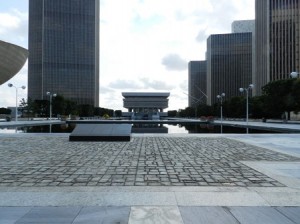» posted on Tuesday, August 27th, 2013 by Linda Lou Burton
It’s Really, Really Old
 Linda Burton posting from Albany, New York – Age denotes character. Isn’t that what you’ve always heard? If that’s true, then Albany has character aplenty, because Albany is old. Really, really old. It is the longest continuously chartered city in the United States, tracing back to July 22, 1686 when Governor Dongan issued a charter fixing boundaries, setting up a municipal government, naming the first officers, and establishing Albany as the sole market town in the upper Hudson River region. Mayor Pieter Schuyler took the oath of office July 26, 1686, and the rest, as
Linda Burton posting from Albany, New York – Age denotes character. Isn’t that what you’ve always heard? If that’s true, then Albany has character aplenty, because Albany is old. Really, really old. It is the longest continuously chartered city in the United States, tracing back to July 22, 1686 when Governor Dongan issued a charter fixing boundaries, setting up a municipal government, naming the first officers, and establishing Albany as the sole market town in the upper Hudson River region. Mayor Pieter Schuyler took the oath of office July 26, 1686, and the rest, as  they say, is history. But the European history of the area goes back even further, to 1609, when a fellow by the name of Henry Hudson sailed a ship up the river that now bears his name. This led the Dutch to lay claim to the area; by 1624 the Dutch West India Company had built a trading post on the west bank of the river and named it Fort Orange. There were soldiers for protection, employees to conduct business, and farmers to provide food. By the 1640s a fur trading community had evolved north of the Fort; it took the name Beverwyck. Fast forward; the Fort became less profitable to the Company; there was a devastating Hudson River flood; New Netherland fell to the English. Beverwyck was renamed Albany in
they say, is history. But the European history of the area goes back even further, to 1609, when a fellow by the name of Henry Hudson sailed a ship up the river that now bears his name. This led the Dutch to lay claim to the area; by 1624 the Dutch West India Company had built a trading post on the west bank of the river and named it Fort Orange. There were soldiers for protection, employees to conduct business, and farmers to provide food. By the 1640s a fur trading community had evolved north of the Fort; it took the name Beverwyck. Fast forward; the Fort became less profitable to the Company; there was a devastating Hudson River flood; New Netherland fell to the English. Beverwyck was renamed Albany in  1664, in honor of the Duke of Albany, who later became England’s King James II. The English built a new fort, and that brings us back to the Dongan Charter of 1686. Those are the bones of the Albany story; after a visit to the Empire State Plaza I’ll begin to flesh it out. That’s where the castle-like State Capitol and the sleekly modern Cultural Education Center do a face off, across shimmering pools.
1664, in honor of the Duke of Albany, who later became England’s King James II. The English built a new fort, and that brings us back to the Dongan Charter of 1686. Those are the bones of the Albany story; after a visit to the Empire State Plaza I’ll begin to flesh it out. That’s where the castle-like State Capitol and the sleekly modern Cultural Education Center do a face off, across shimmering pools.
The Empire State Plaza is the brainchild of Governor Nelson Rockefeller. A costly and controversial project, construction began in 1959 and the last building was completed in 1976. You need a map to get the gist of it; there is the State Capitol (completed in 1899) across narrow-laned State Street, facing it all; there is an open Plaza area centered by three  reflecting pools, and at the end of that, the Cultural Education Center. On one side of the pools are the Corning Tower, The Egg, and the Justice Building; on the other side are four 23-story state office buildings, identical in shape, plus the massive Legislative Office Building. And that’s only half the story; underground a concourse connects everything – there are meeting rooms and a convention hall; parking garages and a transit center; retail shops and restaurants. Need some McDonald’s fries? A shoeshine? A Hallmark card? More than 13,000 state employees work in the complex; as to visitors, the New York State Museum alone (in the Cultural Education Center) attracts over 640,000 of them a year – it’s the top tourist draw in the capital city region. http://www.oce.nysed.gov/visit.html The Cultural Education Center also houses the New York State Archives and the State Library, other crowd-drawers on the Plaza, along with the
reflecting pools, and at the end of that, the Cultural Education Center. On one side of the pools are the Corning Tower, The Egg, and the Justice Building; on the other side are four 23-story state office buildings, identical in shape, plus the massive Legislative Office Building. And that’s only half the story; underground a concourse connects everything – there are meeting rooms and a convention hall; parking garages and a transit center; retail shops and restaurants. Need some McDonald’s fries? A shoeshine? A Hallmark card? More than 13,000 state employees work in the complex; as to visitors, the New York State Museum alone (in the Cultural Education Center) attracts over 640,000 of them a year – it’s the top tourist draw in the capital city region. http://www.oce.nysed.gov/visit.html The Cultural Education Center also houses the New York State Archives and the State Library, other crowd-drawers on the Plaza, along with the  Observation Deck on the 42-story Corning Tower and the Performing Arts Center housed in The Egg.
Observation Deck on the 42-story Corning Tower and the Performing Arts Center housed in The Egg.
The Egg, which has been described as a “half grapefruit sitting atop a teacup” houses two theaters – the Kitty Carlisle Hart seats 982 in fifteen tiered rows, wrapping around a dual hydraulic-lift stage; the Lewis A Swyer provides a more intimate space with 450 seats in nine rows. Comedy, dance, family events, film, music; you’ll find it all at the Egg, happening year round. http://www.theegg.org/about
 The Corning Tower is the tallest building in the state outside of New York City and the first thing to catch your eye as you approach the city, with its angular shape of marble and glass; it is 42 stories and 589 feet high. The office building houses the NYS Department of Health, and the Office of General Services; it’s part of the “working” complex. But visitors are welcome on the Observation Deck, where you can see not only the entire city of Albany and its Port, but the Hudson River Valley, and the foothills of the Adirondacks, the Catskills, and even the Berkshires of western Massachusetts. http://ogs.ny.gov/ESP/CT/Tours/Obdeck.asp
The Corning Tower is the tallest building in the state outside of New York City and the first thing to catch your eye as you approach the city, with its angular shape of marble and glass; it is 42 stories and 589 feet high. The office building houses the NYS Department of Health, and the Office of General Services; it’s part of the “working” complex. But visitors are welcome on the Observation Deck, where you can see not only the entire city of Albany and its Port, but the Hudson River Valley, and the foothills of the Adirondacks, the Catskills, and even the Berkshires of western Massachusetts. http://ogs.ny.gov/ESP/CT/Tours/Obdeck.asp
Albany is one of the oldest surviving settlements of the original thirteen colonies, and has been state capital since 1797. It is one of the first cities in the world to have installed public water mains, sewer lines, natural gas lines, and electricity. It was the original eastern terminus of the Erie Canal, and home to one of the earliest railroad systems in the world. It exported beer, lumber, published works, and ironworks; by 1810 it was one of the ten most populous cities in the US, a distinction it held until the 1860 US Census. Its population today is 97,856 (US Census 2010) but the Capital District region including Troy, Schenectady, and Saratoga Springs forms a Metro Area of 870,716.
Albany’s skyline changed dramatically in the 1960’s with the construction of the Empire State Plaza but much of the old has been preserved. From the Corning Tower, one can look across the sweep of the city at historic church steeples, government buildings, homes that were built by the original Dutch families, and museums that hold precious the city’s heritage.
Churches
 Cathedral of All Saints, 5th largest cathedral in the nation, first Episcopal cathedral in America built on the English model of church, hospital, convent, and school.
Cathedral of All Saints, 5th largest cathedral in the nation, first Episcopal cathedral in America built on the English model of church, hospital, convent, and school.- Cathedral of the Immaculate Conception, 1852, oldest neo-Gothic cathedral structure in the country.
- First Church in Albany, founded 1642, existing structure 1798 houses the oldest pulpit in America, imported from the Netherlands in 1656.
- St Peter’s Episcopal Church, founded 1716, current structure 1859 features stained glass, mosaic tile floors, and a marble altar by world-famous artisans.
Government Buildings
 Albany City Hall, completed 1883, designed by H H Richardson, acclaimed as one of the most beautiful buildings in America.
Albany City Hall, completed 1883, designed by H H Richardson, acclaimed as one of the most beautiful buildings in America.- Albany State Capitol, completed 1899, to be discussed fully in a separate post.
- NYS Court of Appeals, an 1842 Greek Revival building copied from the ancient Greek Temple of Nike Apteros on the Acropolis.
- NYS Department of Education Building, completed 1912 and modeled after the Parthenon, longest colonnade in the US, designed by Henry Hombostel.
- NYS Executive Mansion, home to NY governors since 1875.
- State University of New York Plaza; Delaware and Hudson Railway erected building 1915; it has the largest working weathervane in the US weighing 800 pounds, a replica of Henry Hudson’s ship Half Moon.
Historic Sites and Homes
 Albany Rural Cemetery, established 1844, resting place of President Chester Arthur and five NY governors.
Albany Rural Cemetery, established 1844, resting place of President Chester Arthur and five NY governors.- Cherry Hill, 1787, home of Catherine Putman and her Van Rensselaer ancestors.
- Schuyler Mansion, 1765, home of Revolutionary War General Philip Schuyler and family; daughter married Alexander Hamilton in the parlor.
- Ten Broeck Mansion, built in 1797 for General Abraham Ten Broeck and his wife, Elizabeth Van Rensselaer.
Museums
 American Italian Heritage Museum & Cultural Center.
American Italian Heritage Museum & Cultural Center.- Irish American Heritage Museum.
- New York State Museum.
- Shaker Heritage Society; site of America’s first Shaker settlement; 1848 meeting house, 1916 barn, garden, orchards, cemetery.
By the time I’ve checked out all of these and had a piece or two of Dutch Apple Pie, I should know Albany like an old, old friend.
